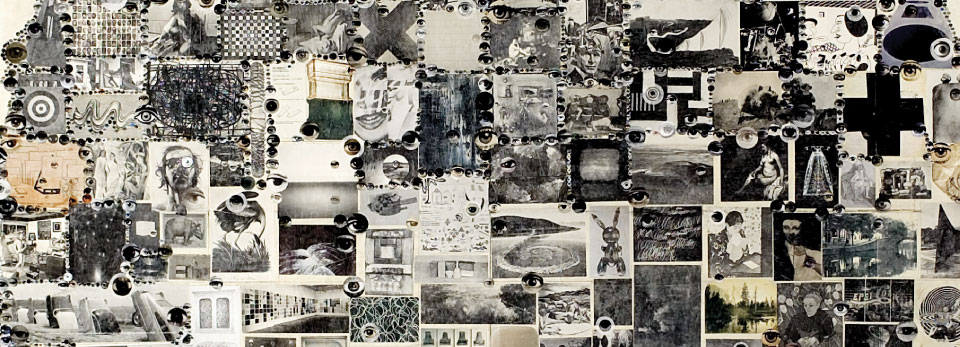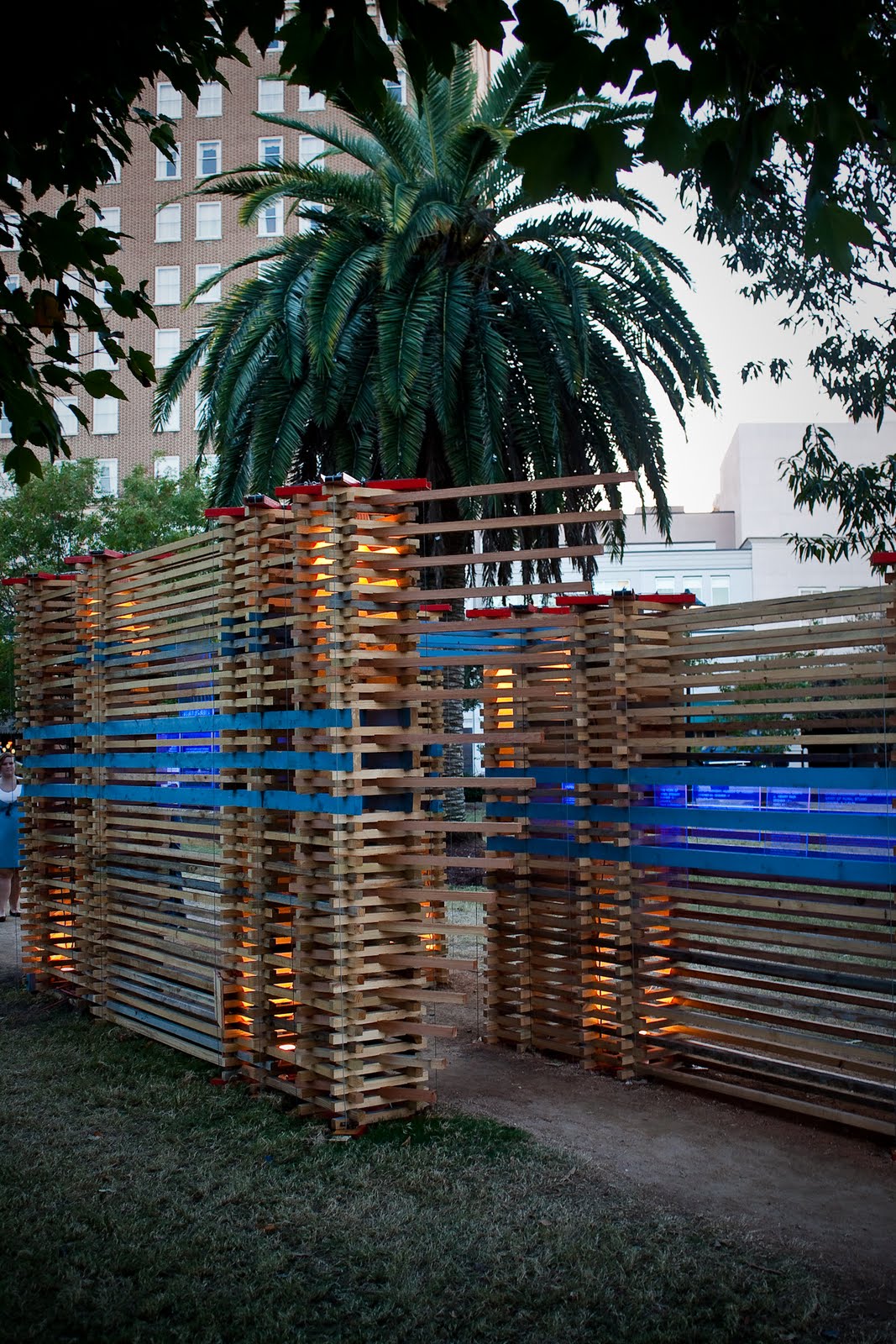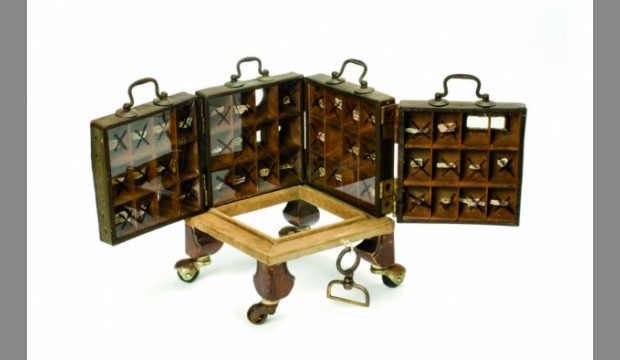


If you’ve walked into Marion Square any time within the last two weeks, you may have noticed a new, strange, stick-like structure near the corner of Calhoun and King Streets. Similar to skinny Lincoln Logs, the spindly structure weaves itself into a canopy over the west corner pathway of the square. It popped up, seemingly overnight, and resembles a giant Jenga game. You’d almost not notice this piece of artwork since it blends so well with the scenery. But then evening falls, and the blue lights designed into the wooden slats shimmer a bit more brightly, easily catching the eyes of passers-by.
READ THE FULL STORY [+]
Photographer Pedro Lobo believes the walls of a home say more about its inhabitants than a family portrait. “Walls can tell a lot about the history of a place,” he says. “Walls speak loudly.” But if the walls of your home are made of corrugated zinc, and your neighbors can look into the room where your children sleep, and your kitchen is lit from wires that criss-cross in front of your window, what does that say about you?
A native of Brazil, Lobo studied architecture and painting before turning his attention to photography. Favelas: Architecture of Survival is a collection of 40 large-format prints that chronicle the lives of the very poor in Rio de Janeiro. “What I saw really intrigued me,” he says of his years photographing the favelas. “I saw the strength of the struggle to survive in adverse conditions.”
READ THE FULL STORY [+]Driving through the city, we might notice the construction projects, the garbage trucks, the landscapers trimming the hedges, the school buses passing by. We might see the stacked shipping containers at the port or the rows of truck bays behind the warehouse.
We often may take for granted the paved roads and housing complexes, the discarded water bottles and stacks of flattened automobiles at the scrap yard or discarded cell phones, the SUVs, toy collections and individually packaged juice boxes at the grocery store.
For this is the way we live.
An ambitious new project organized by the College of Charleston’s Halsey Institute of Contemporary Art aims to draw attention to the way we live — and the way other people live — and to challenge assumptions, habits and ideologies.
“Bluesphere: Earth Art Expo” kicked off with an installation called “Ice Storm” by Southern artist Carson Fox at Redux Contemporary Arts Center last month. It ends at the Gibbes Museum of Art with a photography exhibit that runs Dec. 17-March 27 called “Industrial Scars” by Charleston native J. Henry Fair.
READ THE FULL STORY [+]The results of a massive four-year photography project are on display through Jan. 9, 2011, at the South Carolina State Museum in Columbia. Called “Palmetto Portraits,” the exhibition features the work of 24 photographers who have created 275 color and black-and-white portraits of residents of the Palmetto State.
According to Paul Matheny, the museum’s curator of art, the portrait project began in 2006, when the Medical University of South Carolina, located in Charleston, decided to “provide inspiring images” on some of its interior walls. To launch the project, the university sought help from the Halsey Institute of Contemporary Art at the College of Charleston. The idea, Matheny said, was to present the medical students and their teachers with images of the people whom they might one day serve.
READ THE FULL STORY [+]
Call and Response: Africa to America / The Art of Nick Cave and Phyllis Galembo recently opened at the Halsey Institute of Contemporary Art in Charleston, South Carolina. The exhibition brings together the work of two American artists intrigued by the formation of cultural identity and individual experience within a society. Drawing inspiration from the rich ceremonial traditions and elaborate guises of African nations, Nick Cave and Phyllis Galembo create objects that are visually captivating and conceptually charged. Cave’s imaginative Soundsuits and Galembo’s photographic portraits of West African masqueraders prompt the viewer to regard the world in terms of connection and community.
READ THE FULL STORY [+]
Mary Jane Jacob arrives at the airport from Chicago around noon. She’s in town for a weekend to jury the CofC School of the Art’s Young Contemporaries exhibition. She’ll grab some lunch, unpack her bag, then dig in to her task. But first she has a stop to make.
READ THE FULL STORY [+]
At her 800-square-foot home and studio on Hilton Head Island, Aldwyth spends hours leafing through catalogs, magazines and books, searching for images for her latest works of art.
Her more ambitious collages, which offer surrealistic mash-ups of art history, technology and the natural world, can take as long as five years to complete. Originally from California, this 74-year-oldartist has lived on Hilton Head Island since 1968. She quietly creates her iconoclastic collages and assemblages in relative seclusion from the mainstream art world.
“Aldwyth: Work v./Work n. – Collage and Assemblage, 1991-2009,” on view at the Telfair’s Jepson Center for the Arts, celebrates this inventive artist in a major retrospective exhibit. Organized by The Halsey Institute of Contemporary Art at the College of Charleston, the exhibition includes a wide range of mixed-media work created over an 18-year periodat her tiny home studio at Sea Pines.
READ THE FULL STORY [+]Local group The Opposite of a Train’s Bill Carson walked onto the stage at the Memminger Auditorium on a recent evening, wearing a vintage-style brown suit, thick black frames, and carrying a old six-string. He didn’t look the part of a traditional master conductor or academic concert music director. But then, the elaborate Groundhog Day Benefit Concert on Feb. 2 — a fundraiser for the CofC’s Halsey Institute of Contemporary Art — wasn’t exactly a traditional affair.
READ THE FULL STORY [+]The Haiti quake has been a nasty reminder that there are people in the world less fortunate than ourselves. The Haitians struggled to house and feed themselves long before last week’s disaster. They aren’t the only ones who make our lives seem excessive.
In Africa, people live with no regular supply of food or clean water. Their scars from disease and war are there for all to see and document. But it’s one thing to record their suffering and quite another to build relationships with them and communicate their feelings to a blithe Western world.
Starting this week, the Halsey is exhibiting two shows by two talented photographers, Jonathan Torgovnik and Heather McClintock. Torgovnik, who was born in Israel in the late ’60s, has worked for GEO, Sunday Times Magazine, and Stern. He currently takes photographs of bigwigs like Hillary Clinton and George W. Bush (along with other political subjects) for Newsweek.
READ THE FULL STORY [+]